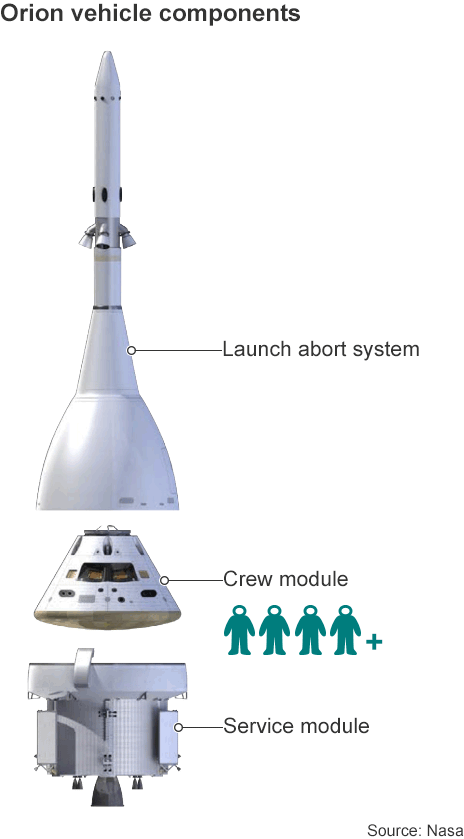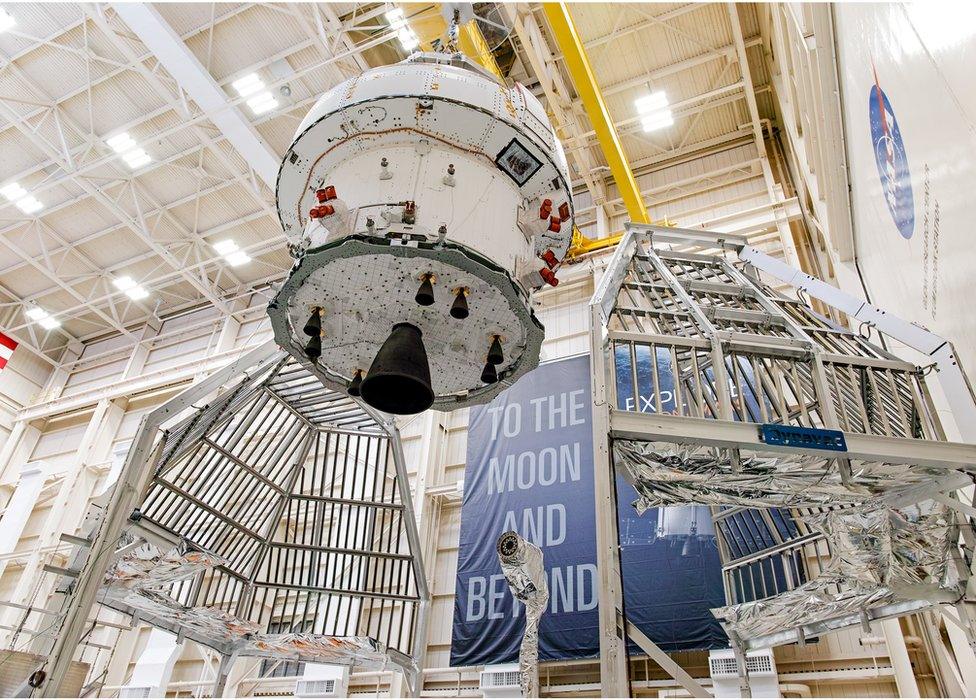European contract signed for Moon mission hardware
- Published

The Orion and ESM for Artemis I is currently going through testing

The European Space Agency has asked the aerospace company Airbus to build another service module for the Americans' Orion crew capsule.
This contract, worth around €250m (£225m), is particularly noteworthy, however.
That's because the hardware will be part of the mission that returns astronauts to the Moon's surface for the first time in 52 years.
The European Service Module (ESM) can be thought of as the back end of Orion.
It pushes the capsule through space, is responsible for its power supply and temperature control, and holds all the water and gases needed to sustain those riding onboard.
The US space agency (Nasa) asked Esa to source Orion service modules to cement their ongoing partnership at the International Space Station (ISS) and to pull Europe into the missions that are planned to go beyond low-Earth orbit.
Nasa has initiated what it calls the Artemis programme to go back to the lunar surface. The Esa/Airbus collaboration has already supplied a service module for the first of this project's missions, Artemis I.

This will be an uncrewed test of Orion and its launch rocket, and is likely to take place in 2021.
Artemis II will see astronauts board Orion for a loop around the Moon. An ESM for this flight is already under contract and in assembly.
Artemis III will be the mission that attempts to make a landing. At the moment this is scheduled for 2024, and the newly contracted service module will be a key piece of mission hardware.
The ESM's role will be to get Orion to the vicinity of the Moon and bring it safely back to Earth. Other components will be required for the descent and ascent phases of the surface operation.
Airbus assembles the service modules at its Bremen facility in Germany.
The design borrows heavily from the uncrewed cargo truck Europe used to run to the space station called the Automated Transfer Vehicle (ATV).
At one time, Europe thought of adapting this truck into a human transportation system of its own, but ultimately baulked at the cost.
Nonetheless, the performance and reliability of the ATV made it an ideal template for Orion's service module.
Cylindrical in shape, the ESM is about 4m wide and tall, and weighs just over 13 tonnes. Airbus is now able to produce it at a substantially reduced cost. The contract for the very first module, signed in 2014, was valued at €390m.
ESMs are given to the Americans as an in-kind contribution to cover the cost of European operations at the space station. But the clear hope from the European perspective is that the integral relationship built up on the capsule will eventually lead to an Esa astronaut being part of an Orion crew that goes to the Moon.
The American capsules are developed by Lockheed Martin. Their procurement is separate to the commercial arrangement Nasa has with SpaceX and Boeing who are now contracted to ferry astronauts to and from the ISS. The agency merely purchases seats in these two US companies' vehicles, Dragon and Starliner. Orion, on the other hand, will be purchased, owned and operated by Nasa.

The ESM has one main engine and 32 smaller thrusters


Artwork: Artemis I and II will go around the Moon, but the first mission will be an uncrewed test
Jonathan.Amos-INTERNET@bbc.co.uk, external and follow me on Twitter: @BBCAmos, external